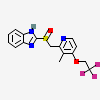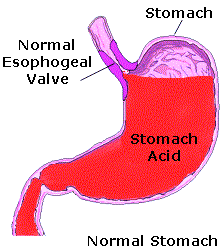Generic Medicines
Taj Pharma is the largest generic pharmaceutical company in India. We hold top positions in different established markets worldwide generics markets..
Lansaprazole Cas No. 103577-45-3

The active ingredient in Lansoprazole Delayed-Release Capsules, Lansoprazole for Delayed-Release Oral Suspension and Lansoprazole SoluTab Delayed- Release Orally Disintegrating Tablets is lansoprazole, a substituted benzimidazole, 2-[[[3-methyl-4-(2,2,2-trifluoroethoxy)-2-pyridyl] methyl] sulfinyl] benzimidazole, a compound that inhibits gastric acid secretion. Its empirical.
Lansoprazole is a white to brownish-white odorless crystalline powder which melts with decomposition at approximately 166°C. Lansoprazole is freely soluble in dimethylformamide; soluble in methanol; sparingly soluble in ethanol; slightly soluble in ethyl acetate, dichloromethane and acetonitrile; very slightly soluble in ether; and practically insoluble in hexane and water.
Lansoprazole is stable when exposed to light for up to two months. The rate of degradation of the compound in aqueous solution increases with decreasing pH. The degradation half-life of the drug substance in aqueous solution at 25°C is 18 hours at pH 7.0.
Lansoprazole is supplied in delayed-release capsules, in delayed-release orally disintegrating tablets for oral administration and in a packet for delayed-release oral suspension.
The delayed-release capsules are available in two dosage strengths: 15 mg and 30 mg of lansoprazole per capsule. Each delayed-release capsule contains enteric-coated granules consisting of 15 mg or 30 mg of lansoprazole (active ingredient) and the following inactive ingredients: hydroxypropyl cellulose, low substituted hydroxypropyl cellulose, colloidal silicon dioxide, magnesium carbonate, methacrylic acid copolymer, starch, talc, sugar sphere, sucrose, polyethylene glycol, polysorbate 80, and titanium dioxide. Lansoprazole SoluTab Delayed-Release Orally Disintegrating Tablets are available in two dosage strengths: 15 mg and 30 mg of lansoprazole per tablet. Each delayed-release orally disintegrating tablet contains enteric-coated microgranules consisting of 15 mg or 30 mg of lansoprazole (active ingredient) and the following inactive ingredients: lactose monohydrate, microcrystalline cellulose, magnesium carbonate, hydroxypropyl cellulose, hypromellose, titanium dioxide, talc, mannitol, methacrylic acid, polyacrylate, polyethylene glycol, glyceryl monostearate, polysorbate 80, triethyl citrate, ferric oxide, citric acid, crospovidone, aspartame **, artificial strawberry flavor and magnesium stearate. Lansoprazole for Delayed-Release Oral Suspension are available in two dosage strengths: 15 mg and 30 mg of lansoprazole per packet. Each packet of delayed-release oral suspension contains enteric-coated granules consisting of 15 or 30 mg of lansoprazole (active ingredient) and the following inactive ingredients (inactive granules): confectioner's sugar, mannitol, docusate sodium, crospovidone, citric acid, sodium citrate, magnesium stearate, and artificial strawberry flavor. The lansoprazole granules and inactive granules, present in unit dose packets, are constituted with water to form a suspension and consumed orally.
DRUG DESCRIPTION
Lansoprazole is used to treat ulcers; gastroesophageal reflux disease (GERD), a condition in which backward flow of acid from the stomach causes heartburn and injury of the food pipe (esophagus); and conditions where the stomach produces too much acid. Lansoprazole is used in combination with other medications to eliminate H. pylori, a bacteria that causes ulcers. Lansoprazole is in a class of medications called proton-pump inhibitors. It works by decreasing the amount of acid made in the stomach.
Lansoprazole works by blocking acid production in the stomach. This medication is known as a proton pump inhibitor (PPI). It is used to treat acid-related stomach and throat (esophagus) problems (e.g., acid reflux or GERD, ulcers, erosive esophagitis, Zollinger-Ellison syndrome). Decreasing excess stomach acid can help relieve symptoms such as heartburn, difficulty swallowing, persistent cough, and trouble sleeping. It can also prevent serious acid damage to your digestive system (e.g., ulcers, cancer of the esophagus).
Lansoprazole may also be used to treat ulcers due to the long-term use of certain drugs (nonsteroidal anti-inflammatory drugs or NSAIDs) for pain or swelling. In addition, this medication may be used in combination with antibiotics to treat certain types of ulcers caused by bacterial infection.
DOSAGE
Lansoprazole comes as a delayed-release (long-acting) capsule and granules to make a delayed-release solution (liquid) to take by mouth. Lansoprazole is usually taken once a day, before eating. When taken in combination with other medications to eliminate H. pylori, lansoprazole is taken twice a day (every 12 hours) or three times a day (every 8 hours) for 10 to 14 days. To help you remember to take lansoprazole, take it around the same time every day. Follow the directions on your prescription label carefully, and ask your doctor or pharmacist to explain any part you do not understand. Take lansoprazole exactly as directed. Do not take more or less of it or take it more often than prescribed by your doctor.
The capsule should be swallowed whole. If you have difficulty swallowing capsules, lansoprazole capsules can be opened, and the granules can be sprinkled on 1 tablespoon of applesauce, Ensure pudding, cottage cheese, yogurt, or strained pears and swallowed immediately. The granules should not be chewed or crushed. The capsules can also be emptied into 2 ounces (60 milliliters) of orange juice or tomato juice, mixed briefly, and swallowed immediately. Rinse the glass with some additional juice and drink immediately.
For patients who have a nasogastric tube, lansoprazole capsules can be opened and the granules mixed in 40 mL of apple juice. The mixture should be injected through the nasogastric tube into the stomach. Then the tube should be flushed with some more apple juice.
To use lansoprazole oral solution, empty the contents of a packet into a container containing 2 tablespoons of water. Stir well and drink immediately. If any granules remain, add more water, stir, and drink immediately. Do not use liquids or foods other than water. Do not crush or chew the granules.
Continue to take lansoprazole even if you feel well. Do not stop taking lansoprazole without talking to your doctor.
SIDE EFFECTS
Lansoprazole may cause side effects.
![]() stomach pain
stomach pain
![]() diarrhea
diarrhea
Constipation or diarrhea may occur. If any of these effects persist or worsen, notify your doctor or pharmacist promptly. Tell your doctor immediately if any of these unlikely but serious side effects occur: stomach pain.
Tell your doctor immediately if any of these highly unlikely but very serious side effects occur: signs of vitamin B-12 deficiency with long-term (over 3 years) treatment (e.g., unusual weakness, sore tongue, numbness or tingling of the hands/feet). A serious allergic reaction to this drug is unlikely, but seek immediate medical attention if it occurs.
Symptoms of a serious allergic reaction include: rash, itching, swelling, dizziness, trouble breathing. If you notice other effects not listed above, contact your doctor or pharmacist.
A serious allergic reaction to this drug is unlikely, but seek immediate medical attention if it occurs. Symptoms of a serious allergic reaction include: rash, itching, swelling, dizziness, trouble breathing.
This is not a complete list of possible side effects. If you notice other effects not listed above, contact your doctor or pharmacist.